The Cornell Lab Bird Academy › Discussion Groups › Bird Photography with Melissa Groo › Practice Understanding Birds for Better Photos
-

-
Seagull was dropping shells from a height to open them up
-
-
I've just joined this course and this is my first submission. My nearest birding patch is a public park in the city which contains open grassland, deciduous woodland and areas of scrub. It is not a nature reserve and is used primarily by non-birders for exercising dogs, cycling and other recreational activities such as walking. This presents particular challenges for observing and photographing birds. In the spring, the park attracts small numbers of Common Whitethroat, a warbler which migrates from Sub-Saharan Africa to breed in Europe. Following the COVID lockdown in the UK in March 2020, I made several early morning visits to the park to ascertain where these birds were displaying and what cover I could use to ensure I could get close enough to photograph them with the sun behind me. I attach three images to illustrate different poses and micro-habitats of the Common Whitethroat in the park. The first shows a bird looking for insects among hawthorn blossom.
 The second image shows a bird foraging for bugs low down in a bramble bush. The yellow area framing the left of the image is blossom of the broom tree.
The second image shows a bird foraging for bugs low down in a bramble bush. The yellow area framing the left of the image is blossom of the broom tree.
 The third image shows a male singing in the open to attract a mate and establish his territory.
The third image shows a male singing in the open to attract a mate and establish his territory.
 The photos were taken with a Canon EOS 7D Mark II camera with an EF100-400mm f/4.5-5.6L IS II USM lens.
The photos were taken with a Canon EOS 7D Mark II camera with an EF100-400mm f/4.5-5.6L IS II USM lens. -
The bird that I love in my area ids the Blue Jay. I learned that their habitat is oak and pine woods, suburban gardens, groves, towns. They will find acorns and bury them in the ground, they also enjoy suet, cracked corn and sunflower seeds at feeders. There are oaks and pines at the edge of our field and happened to catch this jay. Enjoying the course, especially how we all should practice empathy and be ethical in our outings. My camera is a Nikon D500 with a Tamron 150-600mm lens.

-
I live in an alpine valley at an elevation of 8,000 ft, and I really enjoy taking a break from my work and sitting outside to watch the birds throughout the day. It surprised me to see how comfortable they are with my presence, this is something that was not so common with birds in the city. One of the most incredible little beings I have ever had the pleasure of observing is a male broad-tailed hummingbird that called dominion over a feeder I put out. One of the best sounds is the buzzing of their wings, and I heard a lot of it throughout the day as this one little warrior whipped around the house defending his food source from other hummingbirds. I have often heard of people experiencing large numbers of hummingbirds at their homes, and I was curious how this could be accomplished when there is a very tenacious "bully bird" chasing all the others off. Mind you this was the most adorable bully, and he was very sweet to me. One day I was cleaning up some of the garden beds while my partner was cutting sheet metal in a container, and I caught the hummingbird out of the corner of my eye as he headed over to the container where my partner was. I watched as he hovered in observation, then he abruptly darted in front of the opening and flew inside! My partner stopped sawing, and I could hear the surprise in his voice as he greeted the curious visitor. The bird was inside for a good minute, then it came out to fuel up at the feeder. I became curious about these little jewels, and did some digging to find out more about their habits and potential hazards to be weary of. I wanted this little guy to have the best chance for success, and I also wanted to find a way to welcome more on our property. I experimented with more feeders that were placed a distance apart and some out of sight of one another, and sure enough we started seeing more hummingbirds everyday. There were several females that came around, and our little male put on several displays by flying high up and diving in a "U" shaped fashion through the tree. He was quite the ladies man. It was so incredible to hear all that wing buzzing from the moment the sun begins to rise to the moment it set each day. I set up a GoPro by one of the clusters of feeders and caught some awesome moments and behaviors that helped me understand even more about their social interactions. The rufous hummingbirds showed up later on and were the first to leave. The dominant male broad tailed's have already headed off to their warmer destinations, and the few that remain will be gone any day now. I already miss the sounds, but I have something to really look forward to next spring. Also, the feeder maintenance was no joke. It's a good thing I work from home because that alone was a full time job. I took them down to clean them and refill with fresh nectar every day to every other day, and we had 14 feeders throughout the property. I went a little overboard, but it was so worth it! I caught some beautiful photos, and all I had to do was stand still for a few moments. I wish I had a camera set up on me when I would take the feeders down or put them back up- there were a few males that would literally land on top of my head to see what I was doing. They have no fear, and they figured out pretty quickly that I was the nectar lady and was not a threat. I am so happy to be here and to learn with you all! Your photos are incredible, and I look forward to more!



-
Hi Jennifer! I'm new here. I'm just starting out. Your photos are fantastic!!! I love hummingbirds too. What beautiful little birds. I can't imagine having these little birds so comfortable that they would land on you. You must have a very calming presence. I have one hummingbird feeder that is pretty busy throughout the day. You have inspired me to get more. haha! Hope to see more of your photos in the future. :)
-
-
I have chosen the Australian Wood Duck, sometimes also referred to as Maned Duck (see the crest on the male bird) or Maned Goose. I live just north of Brisbane, Queensland and these ducks are common in the region and a familiar sight around many parks especially anywhere with a lake. These photos are taken in Roma Street Parklands on the edge of Brisbane CBD where I have been observing them for many years, I walk to this park on my work lunch breaks and enjoy looking at these ducks and the other waterbirds that frequent the park. I chose this location because these ducks are grazing there more often than not and provide some great photo opportunities where you can get down on the grass to the birds level. These ducks are often seen on grass (they are vegetarian according to my field guide) and don’t swim as often as other species, and are also often seen in trees. I chose this species because they are easily accessible, easy to photograph and practice on and they are what I call a local favourite i.e. a bird I see almost every week but still love seeing them. Although I think I have a pretty good knowledge of this species as I have seen them countless times over the years, this activity did make me stop and think about the birds’ habitat. They are almost always present in Roma St Parklands which is an inner-city park and although it has big trees the site lacks tree hollows. Australian Wood Ducks need tree hollows to breed (the ducklings jump out of the hollows when ready to leave the nest) and I’ve never noticed any tree hollows in the Parklands, so I am wondering if they do breed elsewhere, although the ebird distribution chart for this site shows that they have been observed year round. I can’t recall ever seeing any ducklings in the Parklands, but have seen ducklings in the area where I live which is 25km out of the city and has dead trees with suitable hollows. Breeding season in my area doesn’t really seem to follow a pattern, according to my research in the northern part of its’ range the Wood Duck breeds “after rain”. This year has been very wet in South East Queensland and I have seen ducklings in various places in February and again in August and September. In July (our winter) I also noticed a pair at the lake near my house inspecting a tree hollow, and a few weeks later saw some ducklings at the same lake so I have learnt that this kind of "scoping" behaviour is a good sign that breeding may soon occur.


-

 I went to a meadow near our house where I saw some Chinese Pond Herons. Surprisingly they didn't move. I'm wondering if they're standing still to keep the fish from finding them, or if they just don't want to move.
I also noticed that their feathers are similar to withered reeds, which should be a camouflage, but it is interesting that when they notice a person, they also choose to run away instead of continuing to camouflage.
I went to a meadow near our house where I saw some Chinese Pond Herons. Surprisingly they didn't move. I'm wondering if they're standing still to keep the fish from finding them, or if they just don't want to move.
I also noticed that their feathers are similar to withered reeds, which should be a camouflage, but it is interesting that when they notice a person, they also choose to run away instead of continuing to camouflage. -
I researched about the Black-capped Chickadee. I learned that I should not expect any group photos at the feeder as they take turns eating and that I should look for them in my front yard on my birch tree too, not just in the back by my feeders. My research affirmed that they are bold and curious and my encounters with them as I fill my feeders supports this and make them a cooperative photographic subject. I learned that they have many calls and that the one I always thought was conveying contentment is really an alarm call! Didn't know they played such a sentinel role in sounding the sophisticated alarm of danger at my feeders.

-
My family has a humming bird feeder that we set up each year. When I started this course we were in the heat of the migration and had up to 12 hummingbirds at a time fighting over it. As we have set this up every year for a while now so I knew their habits. But it wasn't until I researched the different species that I knew which hummingbird I had in my area. I set up my tripod on my front porch and just watched them for a while until I found where their favorite perch was. I aimed the camera on the perch and waited for the birds to come. For a while I switched between the feeder and the perch. After a while though I just aimed my camera on the perch and waited. These are the pictures I got.
![IMG_2725[1]](data:image/gif;base64,R0lGODlhAQABAAAAACH5BAEKAAEALAAAAAABAAEAAAICTAEAOw==)
![IMG_2726[1]](data:image/gif;base64,R0lGODlhAQABAAAAACH5BAEKAAEALAAAAAABAAEAAAICTAEAOw==)
![IMG_2705[1]](data:image/gif;base64,R0lGODlhAQABAAAAACH5BAEKAAEALAAAAAABAAEAAAICTAEAOw==)
-
I chose the Black-crowned Night Heron, as I have seen all summer by a local canal. Although this species is described as more dormant during the day, I was surprised at how close I could (carefully) approach without creating a disturbance. A solitary tree growing horizontally on the canal bank provided wonderful eye-level contact and some opportunity for detailed portraiture-like shots in full daylight
 .
. -
I recently took a trip with a local Audubon group to a sod farm on the coastal plain of South Carolina. Numerous shore birds stop there on the migration south and this location affords some good looks. I prepared by studying the behavior and field marks of the birds that could be present. Just after we arrived we found 3 Long-billed Dowitchers in a puddle. These medium-sized sandpipers feed by poking their long bills into the mud in a repeated, sewing machine-like fashion. The early light and reflections set off the rich brown color of the birds.

-
I went to the local pond in search of mallard ducks or any duck species. Instead I captured this photo of a mute swan (cygnus olor) landing in the water with a wake behind him. Mute swans have heavy bodies and short legs. They are non-native in the US and can displace native species. They feed in underwater vegetation and have voracious appetites, eating up to 8 lbs of vegetation a day. They mate for life and can be very aggressive, displaying raised wings to ward off predators.
-

-


 I decided to try and photograph a Virgina Rail. I walk daily in an estuarial wetland past large stands of cat-tails, and I have heard their distinctive call several times. A while ago I came across a photographer I knew who was doing the thing you aren't supposed to do- playing a recording of a Rail to draw it out. I found out in my reading they are not only shy, but very territorial, and he succeeded in drawing a bird out just for a second to get his shot.
I've had an eventful week since deciding on a Virigina Rail. I have been photographing a Great Horned Owl and her fledgeling several times this month. This owl returns here every year and in June or July will show up with her latest brood. This year she has only one, and the both have very graciously posed for me. I think she is very used to excited photographers shooting her every year and is very blasé about it. Maybe it's part of her training of the young owls to take them out and show them the humans. At any rate, when I came close to her usual tree, I heard the repeated alarm calls of a Rail. There were cat-tails below the alder the owl was sitting on. I waited a very long time and never saw it, and no doubt because I was there in addition to the owl, he decided silence was best. While continuing on my way, searching the cat-tails for Rails, I head a call similar to a Rail and spotted a bright yellow beak, a black mask and a gray head on something on a muddy bank. It was very foggy, and not ideal for shooting- I had no idea what it was I took a photo of. It was a Sora! I didn't even know what a Sora was. So cool! At least it is in the Rail family.
Today I went out and heard a Rail call again near to where the Sora was. I once again searched the cat-tails for the Rail, and at first saw nothing. Then a Green Heron flew down right in front of me!! Cool again! I got some great shots.
I guess the take away is, even if you don't find what you are looking for, it's worth looking anyway. You never know what may show up.
I decided to try and photograph a Virgina Rail. I walk daily in an estuarial wetland past large stands of cat-tails, and I have heard their distinctive call several times. A while ago I came across a photographer I knew who was doing the thing you aren't supposed to do- playing a recording of a Rail to draw it out. I found out in my reading they are not only shy, but very territorial, and he succeeded in drawing a bird out just for a second to get his shot.
I've had an eventful week since deciding on a Virigina Rail. I have been photographing a Great Horned Owl and her fledgeling several times this month. This owl returns here every year and in June or July will show up with her latest brood. This year she has only one, and the both have very graciously posed for me. I think she is very used to excited photographers shooting her every year and is very blasé about it. Maybe it's part of her training of the young owls to take them out and show them the humans. At any rate, when I came close to her usual tree, I heard the repeated alarm calls of a Rail. There were cat-tails below the alder the owl was sitting on. I waited a very long time and never saw it, and no doubt because I was there in addition to the owl, he decided silence was best. While continuing on my way, searching the cat-tails for Rails, I head a call similar to a Rail and spotted a bright yellow beak, a black mask and a gray head on something on a muddy bank. It was very foggy, and not ideal for shooting- I had no idea what it was I took a photo of. It was a Sora! I didn't even know what a Sora was. So cool! At least it is in the Rail family.
Today I went out and heard a Rail call again near to where the Sora was. I once again searched the cat-tails for the Rail, and at first saw nothing. Then a Green Heron flew down right in front of me!! Cool again! I got some great shots.
I guess the take away is, even if you don't find what you are looking for, it's worth looking anyway. You never know what may show up. -
Since I moved here four years ago, I reached some conditions to really enjoy birdwatching and try to improve my photography skills, I know it is a long road to ride. First, I joined to the Ornithologist Association (as an amateur), I began studied about the species according to the different regions in the country, and I began making a personal list of species near my house. As a result of my little research I planted trees and flowers for birds, butterflies and insects. We made a fountain too. Now they are closer and closer, I can recognize some sounds and characteristics. Fortunately where I live is a convergence area of different regions . I took this course because I need developing skills in photography as you said in the introduction. Thanks in advance for sharing your knowledge. I live in Costa Rica, in a district of Alajuela´s Province the name is Atenas (it is known as the best climate in the world!). Let me know if you come some day



-
I totally agree, it is essential to investigate the biology, ecology and natural history of birds, so we will have a step forward to improve our photographs. I share this photo that I took today (June 02/2022), as part of the follow-up I do to this species in the Bogotá Savanna, Colombia. Best regards!

-
I did things a bit backwards, and read up about white-fronted terns after observing colonies at a couple of different estuaries in January and March. The colonies consisted of 50-100 birds that were simply hanging out on the sand near the water, with birds flying in and out now and then. At this time of year (Southern Hemisphere late summer, heading into autumn) the terns had already bred but the fledgings were still with their parents. In January I saw parents feeding young - flying in with small fish in their beaks and handing them over to begging young. The hand-off was always very quick and I never managed to photograph it! In March however, I still saw young birds begging but now their parents seemed to be ignoring them. I'm trying to learn how to photograph birds in flight at present, and the terns were a good opportunity to practice this and I felt I had some success. I noticed that they often seemed to extend their wings straight up before taking off, and then took off vertically - not something I've seen before I think. This gave a bit of advance warning that one was about to take off. And in March, I found it helpful to watch the begging young. In time the adult they were begging at would often take off and fly away. Whether this was to get away from the begging chick or fetch it some food, I'm not sure! But it was a good way to guess which bird in the colony might take flight next. The young bird would often fly after the adult too, giving me two opportunities to photograph one in flight. In March I also observed several young terns from another species with the colony. I wasn't able to identify them at the time, but sought advice on identifying them later and was told they were black-fronted terns. They generally seemed to be on the edge of the colony of white-fronted terns rather than in the middle of it, and occasionally seemed to get chased off by the larger white-fronted terns. And now tonight in my reading about them I've learnt that the "white-fronted" refers not to the breast, but to the white band between the black cap and the bill! I hadn't noticed the band before, but it's very clearly visible in my photos, and will help with identification in future.
 This next picture shows an adult extending its wings straight up in preparation for taking off. A young bird is visible begging to the right.
This next picture shows an adult extending its wings straight up in preparation for taking off. A young bird is visible begging to the right.


-
I researched two flycatchers that are fairly common in my area: Cassin's Kingbird and Black Phoebe. I've observed both species before, but my research brought some things to my attention that I was only passively aware of before. In particular, I read that Cassin's Kingbirds prefer to hunt from an elevated perch, while Black Phoebes perch within 7 feet of the ground. This lines up exactly with what I've seen, with Cassin's Kingbirds often perched on the highest wires or at the top of trees, while Black Phoebes hunt front the lower wires or branches, or even yard signs. This makes the Black Phoebe easier to photograph since it's more likely to be at eye level. Their flycatching hunting style also means there are good opportunities for action shots. It's clear when they're hunting as they visually search for their prey -- then sally out to catch it in flight!



-
I have been observing crows and their habits of local daily migrations. New Years Eve this year was clear and sunny after a few weeks of snow, rain, and cloudy days, so I took advantage of this at at sunset when crows move back from the outer areas of the Portland, OR area to downtown along the Willamette River where there are many tall, deciduous trees close together for them to roost. What surprised me was finding hundreds if not several thousand crows boisterously gathering on a heavily treed neighborhood street while on my way downtown. I thought, huh, maybe they have moved their roosting spot. I hung out with them for about 20 minutes. The influx continued and then within about 5 minutes most of them had flown off. It seems that the pattern of movement includes various pit stops where they collect themselves in ever greater numbers before moving to the final roosting spot downtown. As I got closer to the downtown spot, I travelled through another gathering area closer in. Nothing compared to the hundreds of thousands of birds that poured into the trees downtown while I was there. The sound, the movement, the swarms of flapping wings moving across big expanses of sky was wondrous, awesome.



-
 I watched this Double-crested Cormorant fly into the Harlem Meer every morning over the summer. For this photo I got as low as possible on the ground. I watched for almost an hour as it swam and dove for its me. What I found most interesting was it’s timing. It would arrive every morning at 620am and take off around 730a. It was a wonderful way to spend my summer
I watched this Double-crested Cormorant fly into the Harlem Meer every morning over the summer. For this photo I got as low as possible on the ground. I watched for almost an hour as it swam and dove for its me. What I found most interesting was it’s timing. It would arrive every morning at 620am and take off around 730a. It was a wonderful way to spend my summer
-
My husband and I are avid hunters and fishers. I never go camping or fishing without my camera or my Sibley book. I was totally caught off guard with this Dipper. I was walking the dog around the campground without my camera (left at the trailer) and I saw this guy and ran back to get my camera praying the whole time he would be there.



-
-
I took this photo at the end of July 2021. This is an osprey "chick" (brancher, to use a falconry term) testing its wings. He was flying into the wind but never left the nest. You can see its sibling under its left wing. After awhile the sibling did basically the same thing while the first bird laid down. Habitat - rivers, marshes, lakes (these birds were on a man-made marsh) Food sources (same). Osprey catch fish going feet first into the water. This was the end of nesting season in July 2021 On this day I didn't see any distinctive behaviors. However, back in May one of the parents circled me and then landed in a tree near me so I took the hint and left. This bird is migratory although where I took the shot, in central Michigan, they appear to stay year-round.

-

 A Little Eagle (Hieraatus morphnoides) feasting in my back paddock on rabbit. A powerful raptor common to my area. I live inland but only 15 kms from the coastline, both habitats of the Little Eagle. We have rabbits, a Little Eagle favorite, that are in plague proportions. Rabbits are vermin here in Australia destroy habitat of native mammals and eat my trees.... I was lucky to catch this Little Eagle feasting on one he had caught in our back paddock. We live close to a coastal sanctuary and Serendip Sanctuary - (Brolga and Bustard breeding programs)
A Little Eagle (Hieraatus morphnoides) feasting in my back paddock on rabbit. A powerful raptor common to my area. I live inland but only 15 kms from the coastline, both habitats of the Little Eagle. We have rabbits, a Little Eagle favorite, that are in plague proportions. Rabbits are vermin here in Australia destroy habitat of native mammals and eat my trees.... I was lucky to catch this Little Eagle feasting on one he had caught in our back paddock. We live close to a coastal sanctuary and Serendip Sanctuary - (Brolga and Bustard breeding programs) -

-
 Birders alert me that this Sword Billed hummingbird would feed from the flowers you see in white on the background so I was able to positioned my self to get a good angle to capture the image. I rely on locals for the best sightings most of the time and it usually has provided me great opportunities for some great images.
Birders alert me that this Sword Billed hummingbird would feed from the flowers you see in white on the background so I was able to positioned my self to get a good angle to capture the image. I rely on locals for the best sightings most of the time and it usually has provided me great opportunities for some great images.
Read More:

 The second image shows a bird foraging for bugs low down in a bramble bush. The yellow area framing the left of the image is blossom of the broom tree.
The second image shows a bird foraging for bugs low down in a bramble bush. The yellow area framing the left of the image is blossom of the broom tree.
 The third image shows a male singing in the open to attract a mate and establish his territory.
The third image shows a male singing in the open to attract a mate and establish his territory.
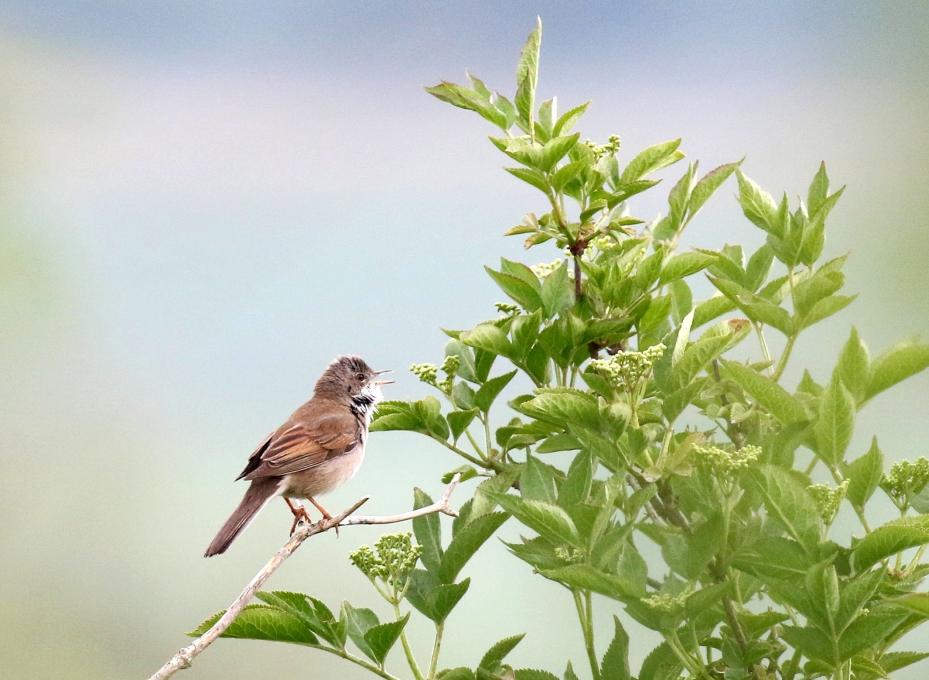 The photos were taken with a Canon EOS 7D Mark II camera with an EF100-400mm f/4.5-5.6L IS II USM lens.
The photos were taken with a Canon EOS 7D Mark II camera with an EF100-400mm f/4.5-5.6L IS II USM lens. 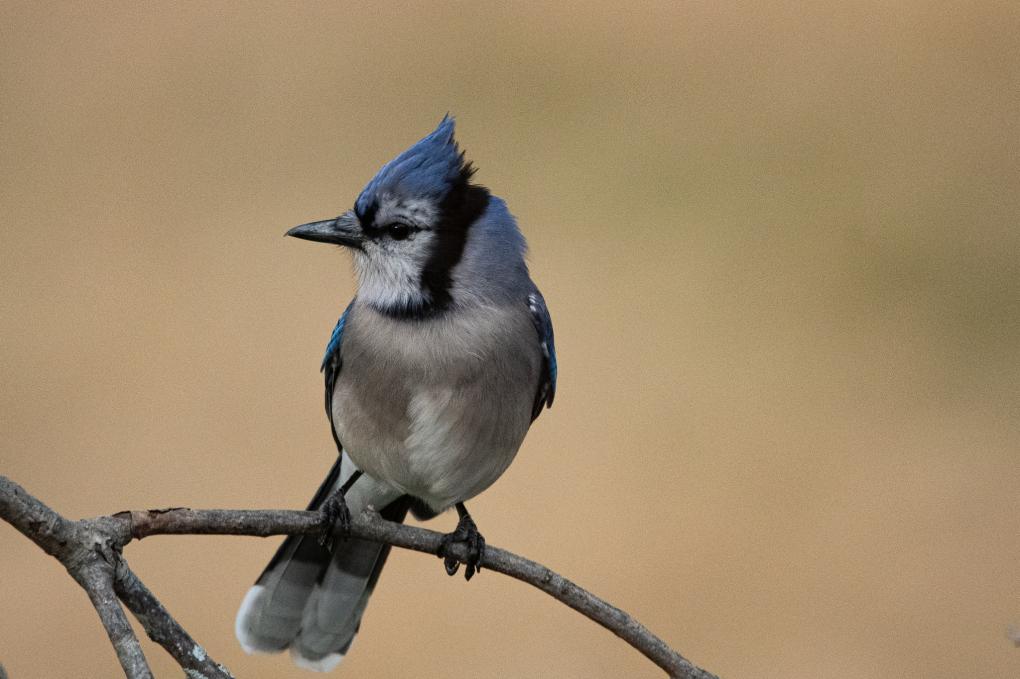
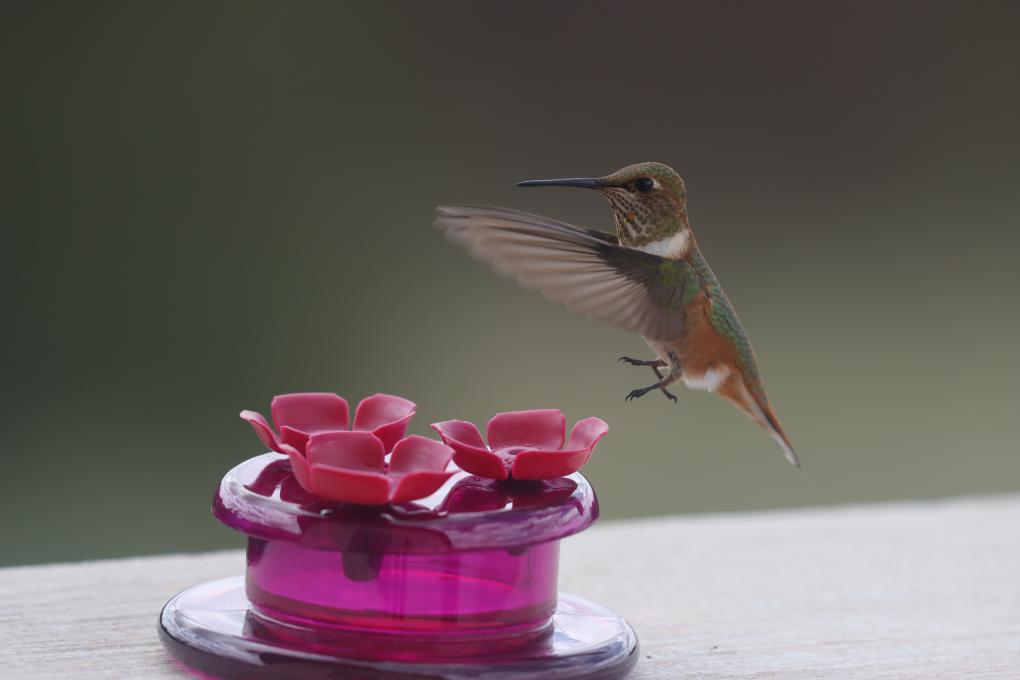
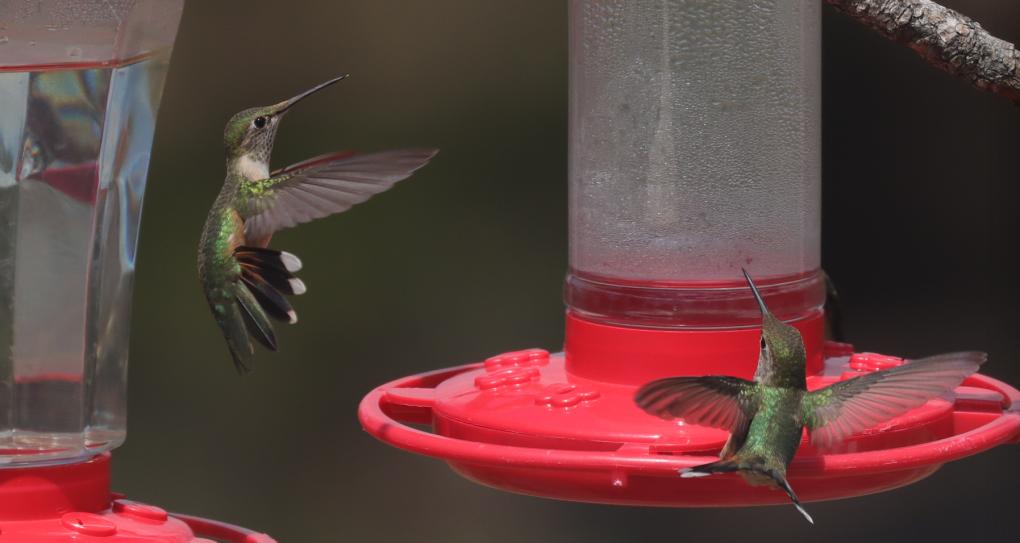
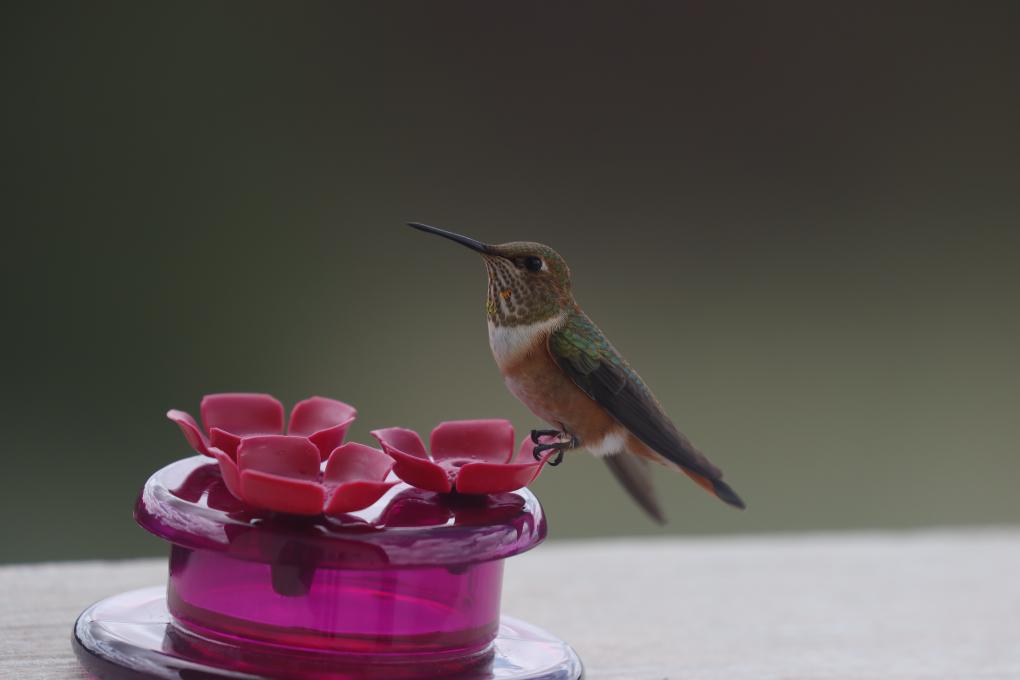
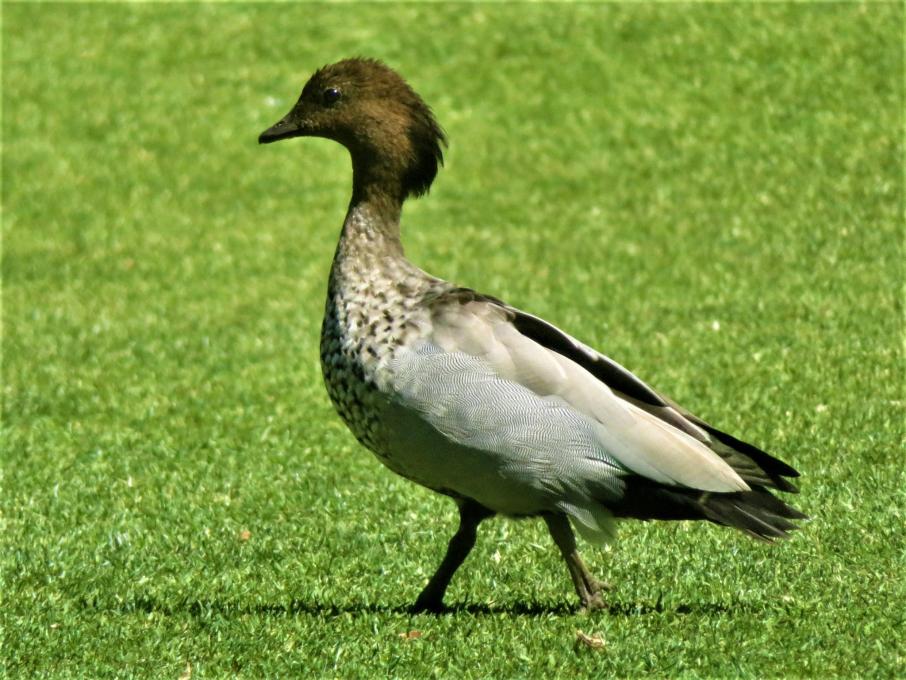
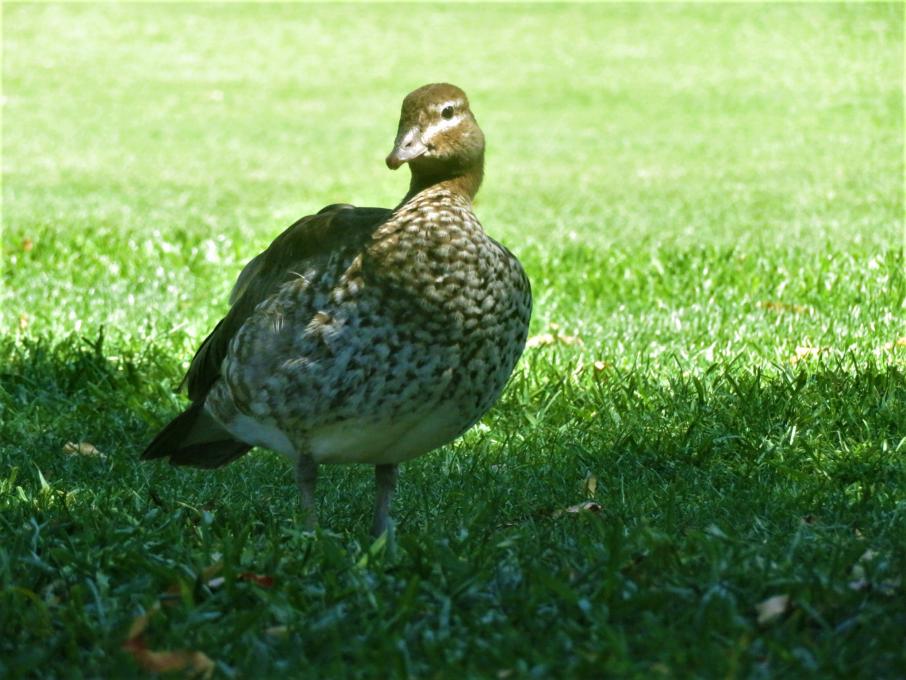
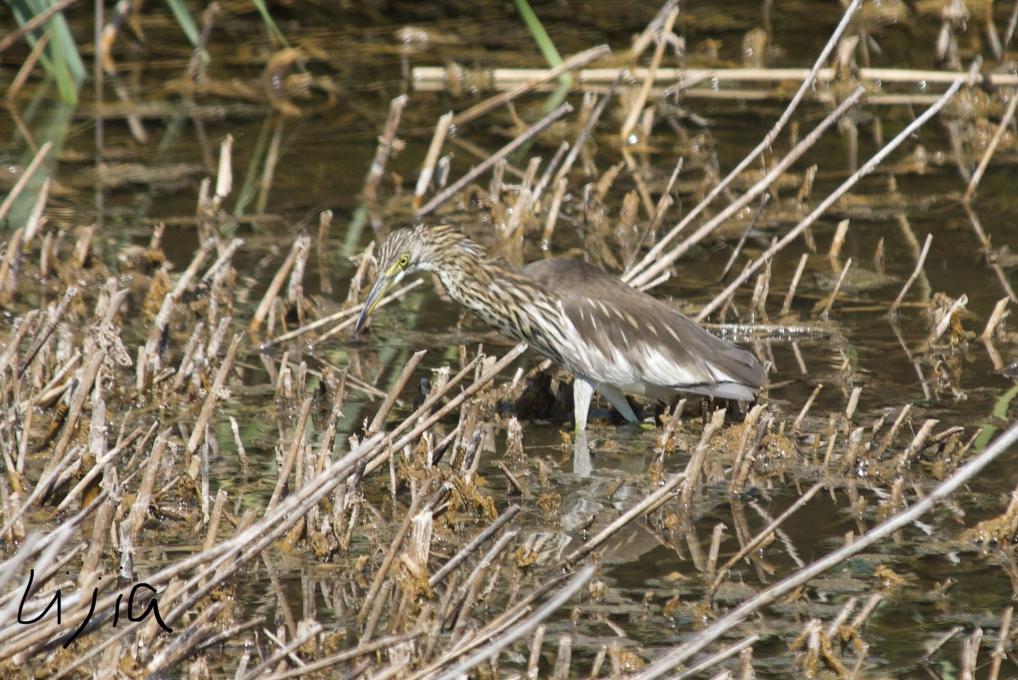
 I went to a meadow near our house where I saw some Chinese Pond Herons. Surprisingly they didn't move. I'm wondering if they're standing still to keep the fish from finding them, or if they just don't want to move.
I also noticed that their feathers are similar to withered reeds, which should be a camouflage, but it is interesting that when they notice a person, they also choose to run away instead of continuing to camouflage.
I went to a meadow near our house where I saw some Chinese Pond Herons. Surprisingly they didn't move. I'm wondering if they're standing still to keep the fish from finding them, or if they just don't want to move.
I also noticed that their feathers are similar to withered reeds, which should be a camouflage, but it is interesting that when they notice a person, they also choose to run away instead of continuing to camouflage. 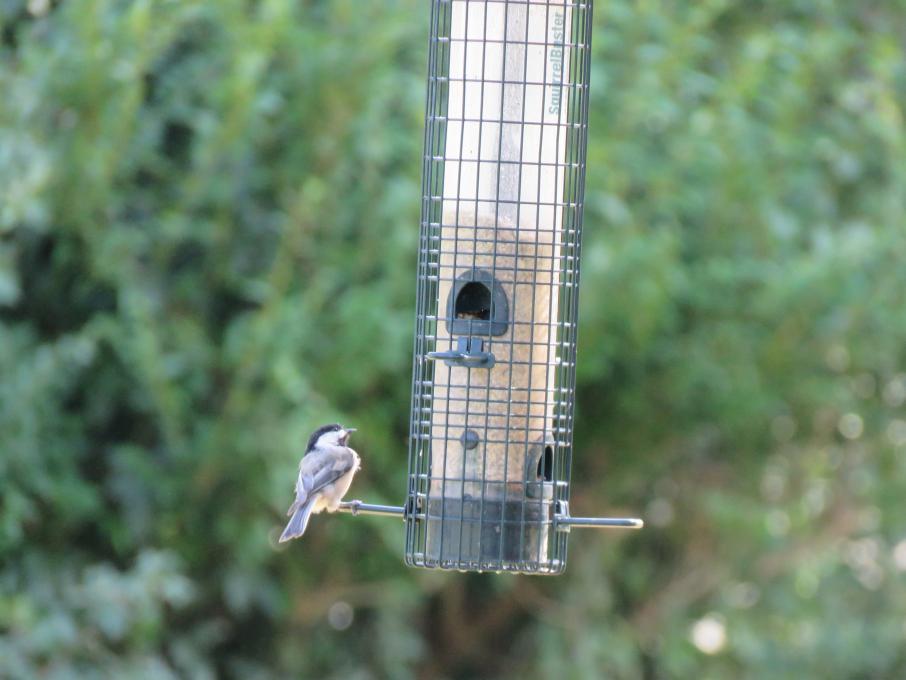
![IMG_2725[1]](https://academy.allaboutbirds.org/wp-content/uploads/hm_bbpui/912585/Tyeav8dgetkkk4fmp3a25pp7cnnldg97m.jpg)
![IMG_2726[1]](https://academy.allaboutbirds.org/wp-content/uploads/hm_bbpui/912585/Tr06a7pb04xq7v726ek43kq4axkgaoejj.jpg)
![IMG_2705[1]](https://academy.allaboutbirds.org/wp-content/uploads/hm_bbpui/912585/Tvsc4ck98rgfr09b4yfpet3ccaa9b4j01.jpg)
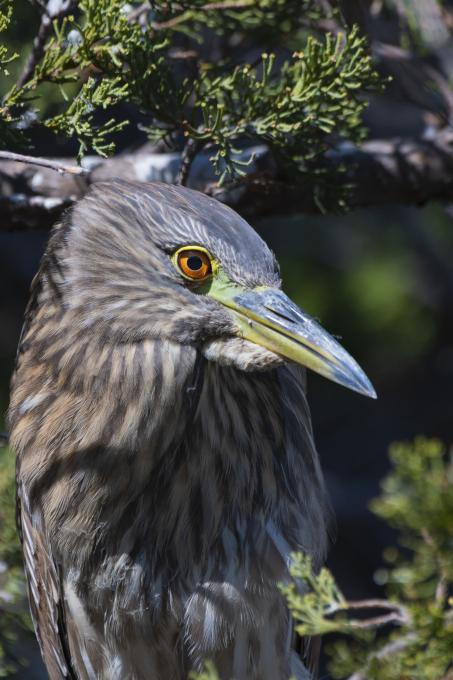 .
. 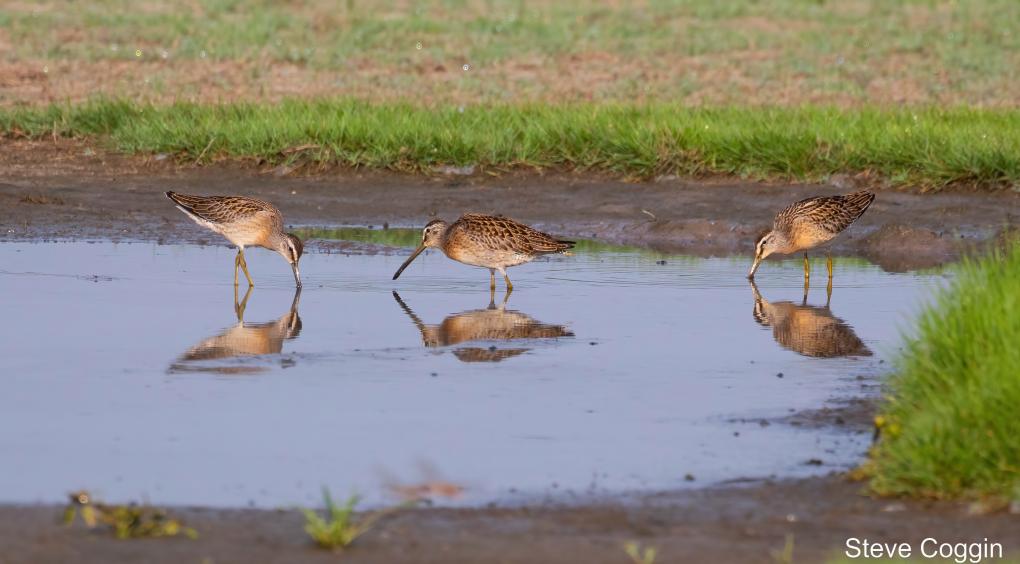

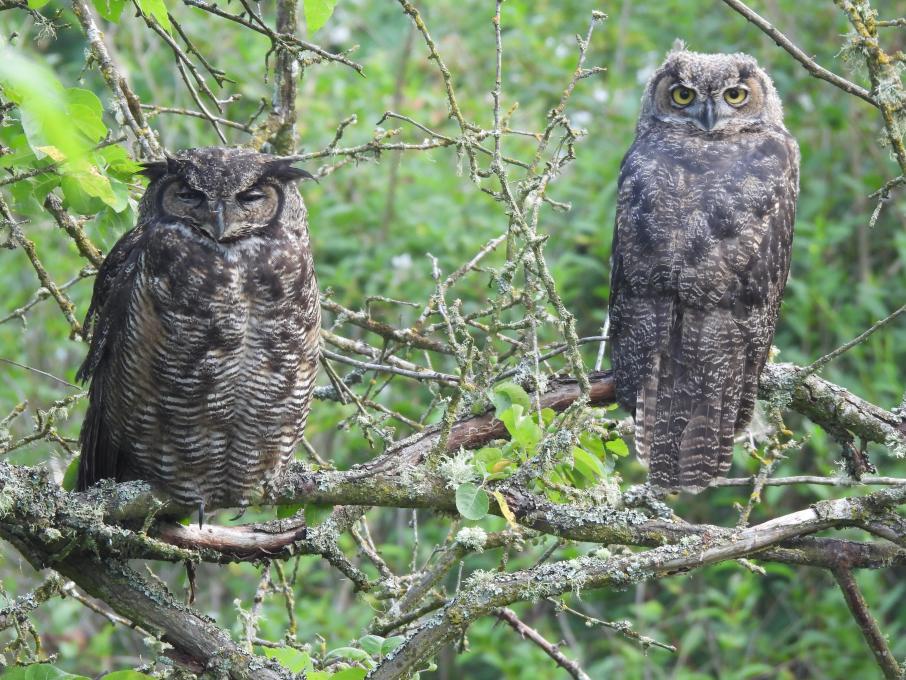
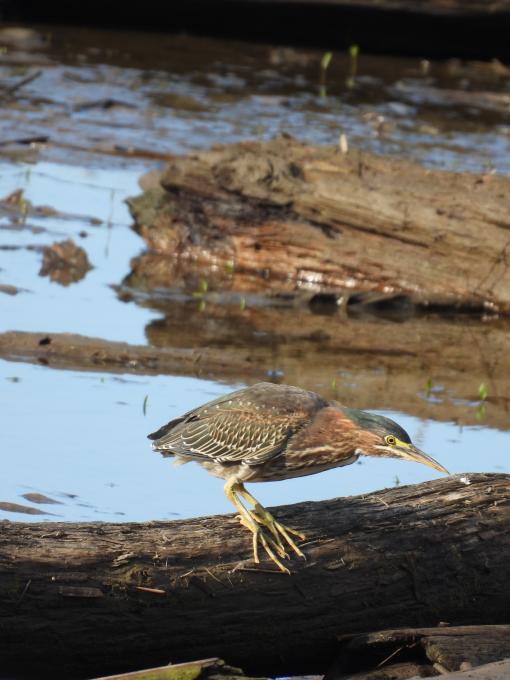
 I decided to try and photograph a Virgina Rail. I walk daily in an estuarial wetland past large stands of cat-tails, and I have heard their distinctive call several times. A while ago I came across a photographer I knew who was doing the thing you aren't supposed to do- playing a recording of a Rail to draw it out. I found out in my reading they are not only shy, but very territorial, and he succeeded in drawing a bird out just for a second to get his shot.
I've had an eventful week since deciding on a Virigina Rail. I have been photographing a Great Horned Owl and her fledgeling several times this month. This owl returns here every year and in June or July will show up with her latest brood. This year she has only one, and the both have very graciously posed for me. I think she is very used to excited photographers shooting her every year and is very blasé about it. Maybe it's part of her training of the young owls to take them out and show them the humans. At any rate, when I came close to her usual tree, I heard the repeated alarm calls of a Rail. There were cat-tails below the alder the owl was sitting on. I waited a very long time and never saw it, and no doubt because I was there in addition to the owl, he decided silence was best. While continuing on my way, searching the cat-tails for Rails, I head a call similar to a Rail and spotted a bright yellow beak, a black mask and a gray head on something on a muddy bank. It was very foggy, and not ideal for shooting- I had no idea what it was I took a photo of. It was a Sora! I didn't even know what a Sora was. So cool! At least it is in the Rail family.
Today I went out and heard a Rail call again near to where the Sora was. I once again searched the cat-tails for the Rail, and at first saw nothing. Then a Green Heron flew down right in front of me!! Cool again! I got some great shots.
I guess the take away is, even if you don't find what you are looking for, it's worth looking anyway. You never know what may show up.
I decided to try and photograph a Virgina Rail. I walk daily in an estuarial wetland past large stands of cat-tails, and I have heard their distinctive call several times. A while ago I came across a photographer I knew who was doing the thing you aren't supposed to do- playing a recording of a Rail to draw it out. I found out in my reading they are not only shy, but very territorial, and he succeeded in drawing a bird out just for a second to get his shot.
I've had an eventful week since deciding on a Virigina Rail. I have been photographing a Great Horned Owl and her fledgeling several times this month. This owl returns here every year and in June or July will show up with her latest brood. This year she has only one, and the both have very graciously posed for me. I think she is very used to excited photographers shooting her every year and is very blasé about it. Maybe it's part of her training of the young owls to take them out and show them the humans. At any rate, when I came close to her usual tree, I heard the repeated alarm calls of a Rail. There were cat-tails below the alder the owl was sitting on. I waited a very long time and never saw it, and no doubt because I was there in addition to the owl, he decided silence was best. While continuing on my way, searching the cat-tails for Rails, I head a call similar to a Rail and spotted a bright yellow beak, a black mask and a gray head on something on a muddy bank. It was very foggy, and not ideal for shooting- I had no idea what it was I took a photo of. It was a Sora! I didn't even know what a Sora was. So cool! At least it is in the Rail family.
Today I went out and heard a Rail call again near to where the Sora was. I once again searched the cat-tails for the Rail, and at first saw nothing. Then a Green Heron flew down right in front of me!! Cool again! I got some great shots.
I guess the take away is, even if you don't find what you are looking for, it's worth looking anyway. You never know what may show up. 

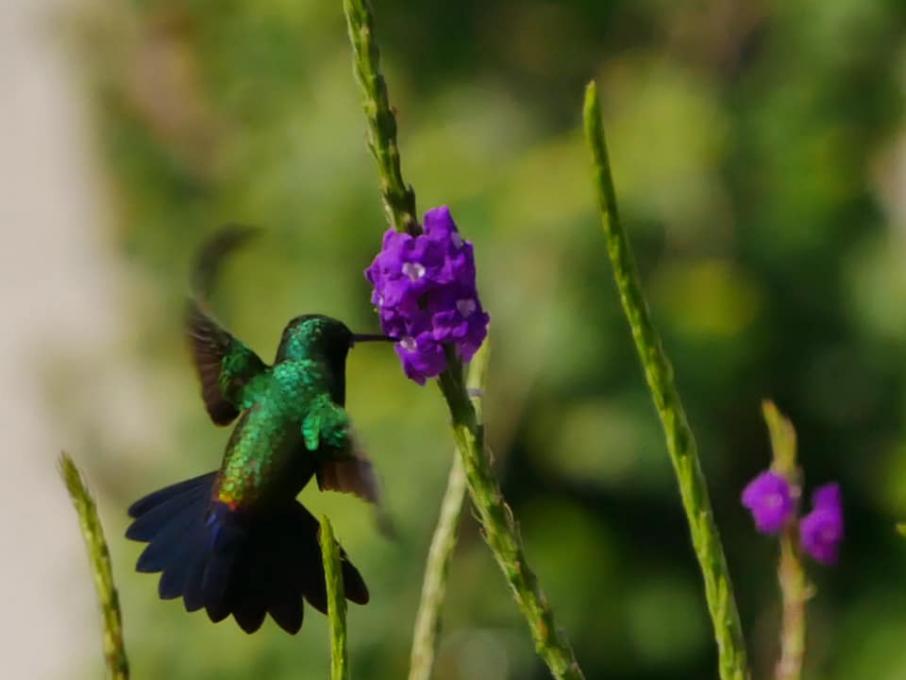
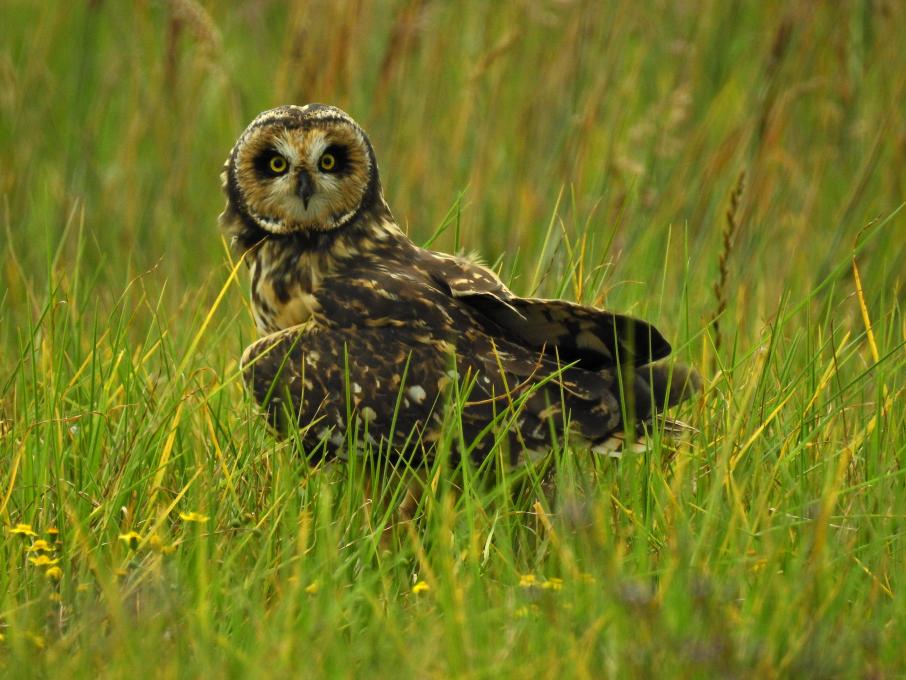
 This next picture shows an adult extending its wings straight up in preparation for taking off. A young bird is visible begging to the right.
This next picture shows an adult extending its wings straight up in preparation for taking off. A young bird is visible begging to the right.
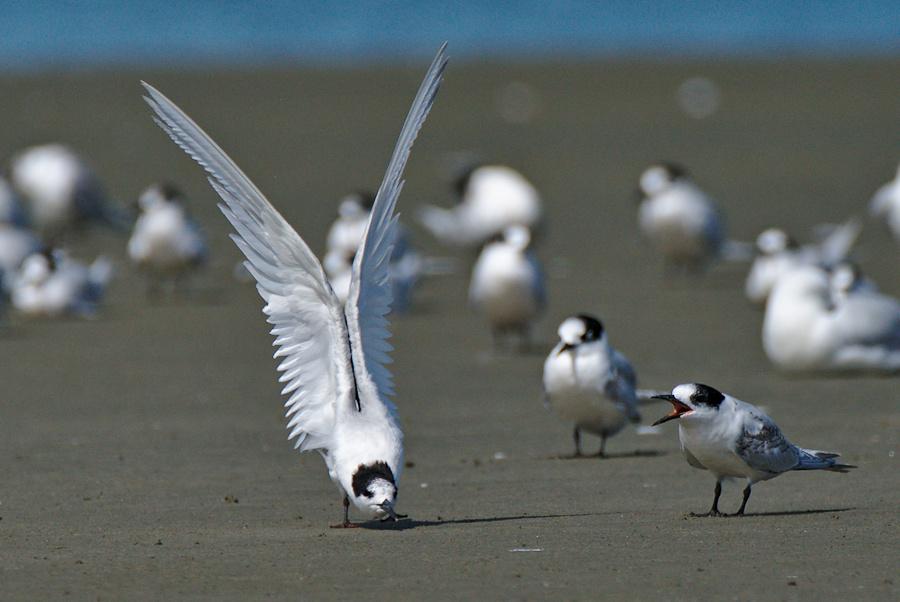
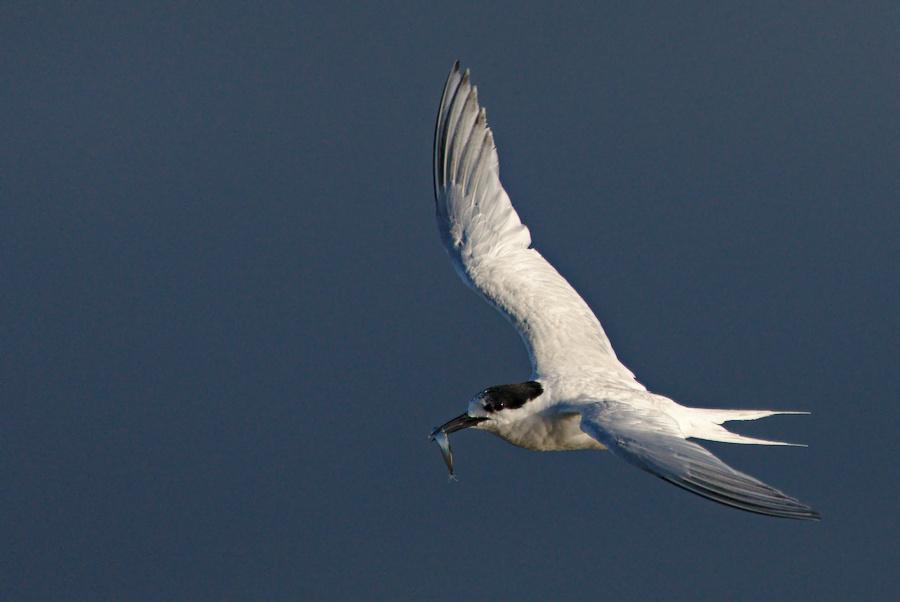
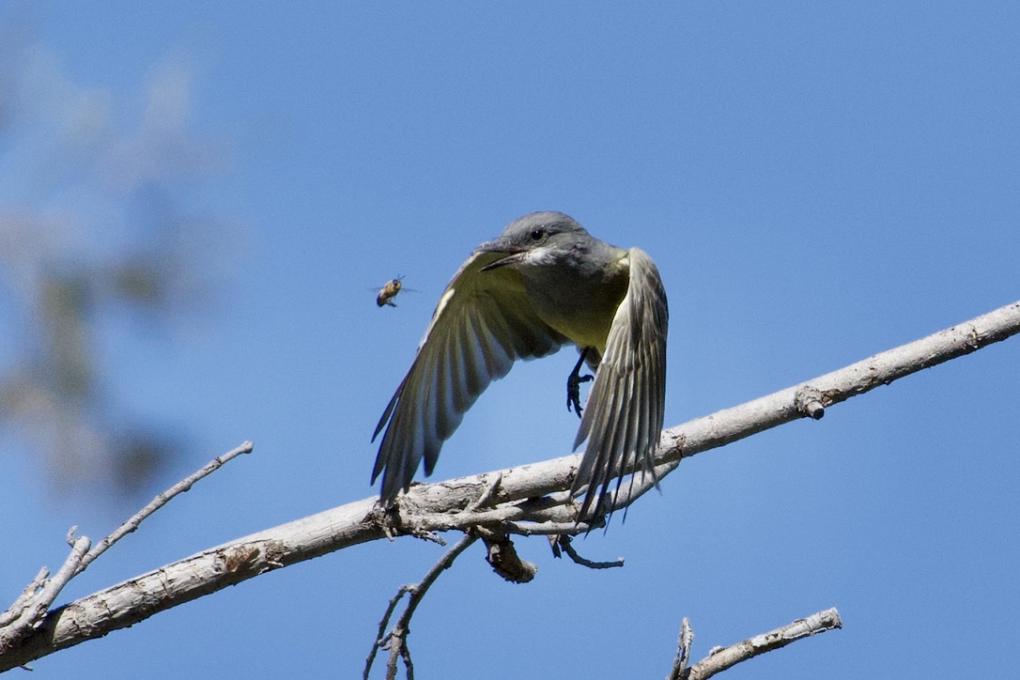
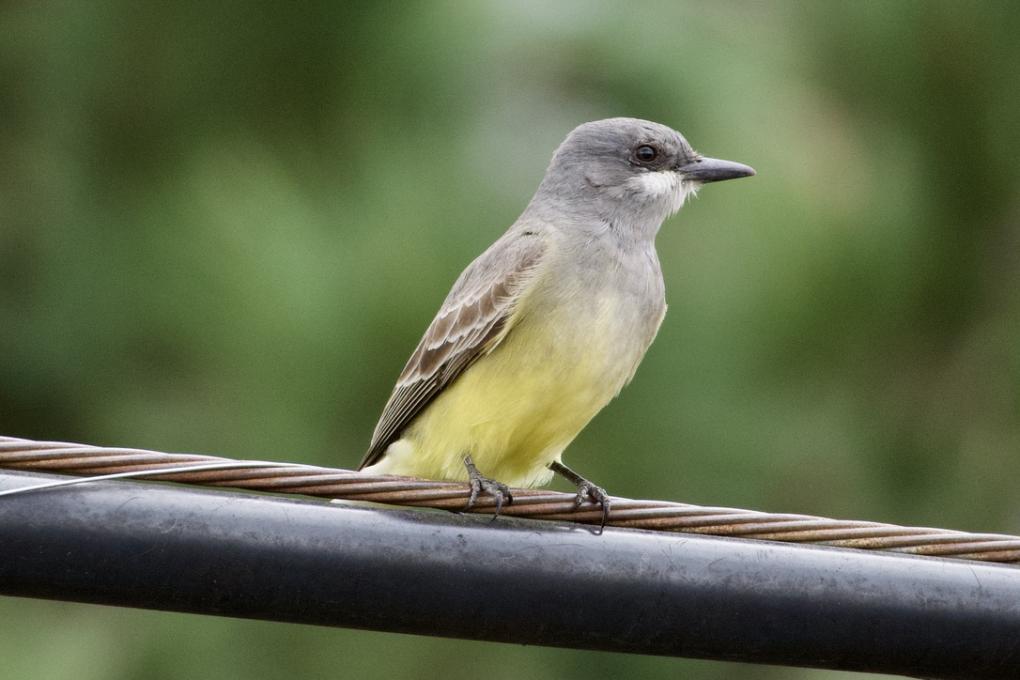
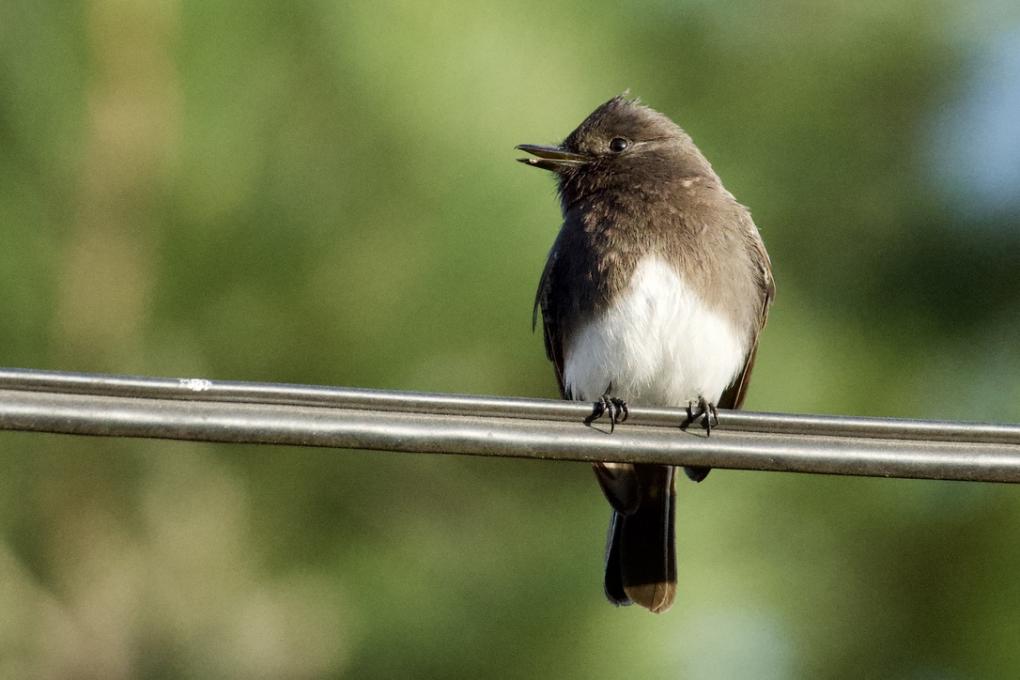
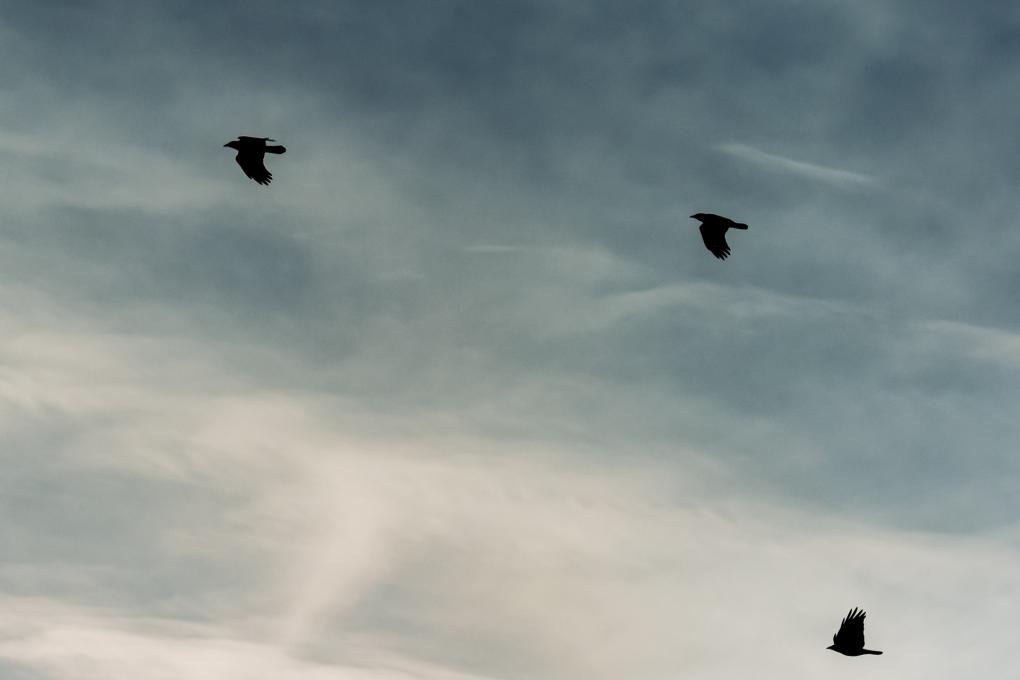
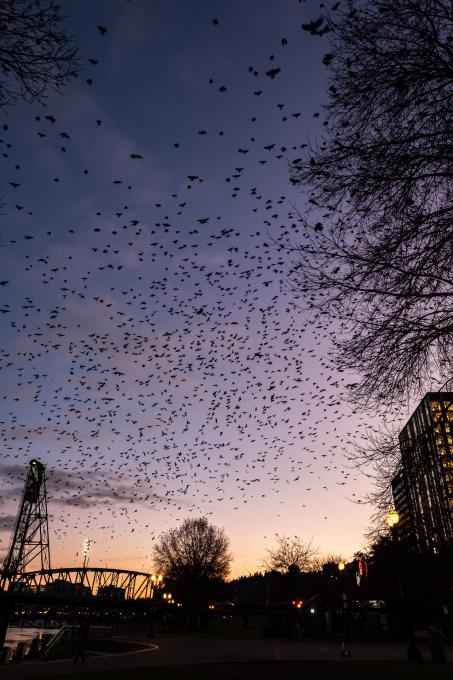
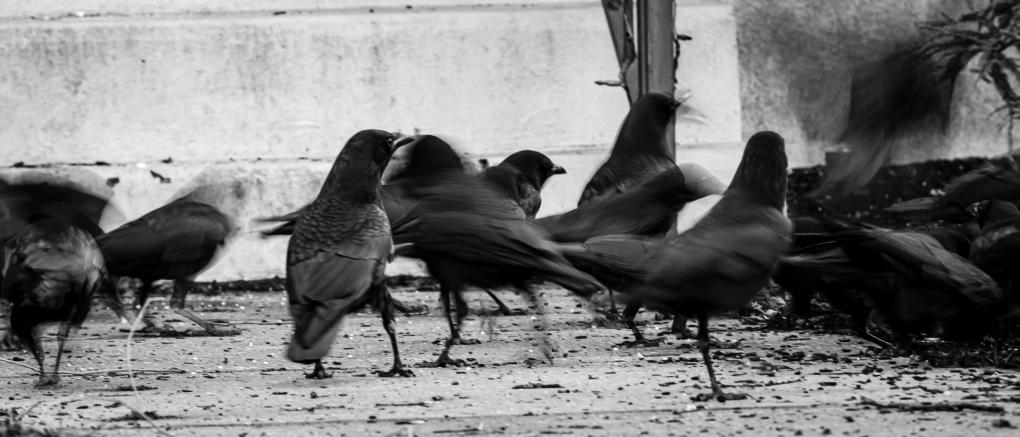
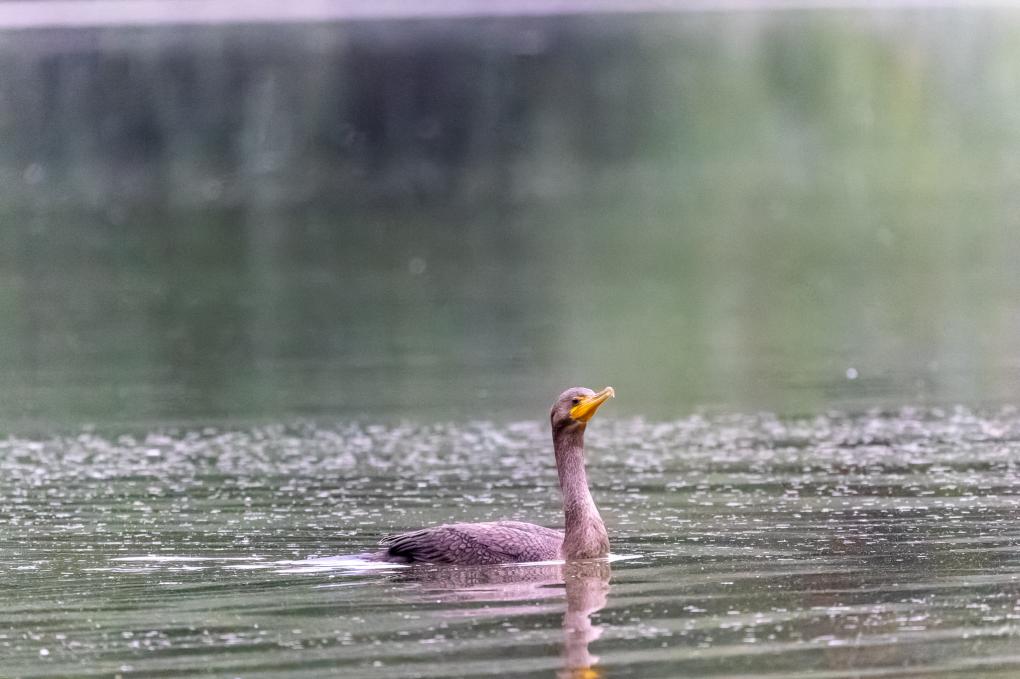 I watched this Double-crested Cormorant fly into the Harlem Meer every morning over the summer. For this photo I got as low as possible on the ground. I watched for almost an hour as it swam and dove for its me. What I found most interesting was it’s timing. It would arrive every morning at 620am and take off around 730a. It was a wonderful way to spend my summer
I watched this Double-crested Cormorant fly into the Harlem Meer every morning over the summer. For this photo I got as low as possible on the ground. I watched for almost an hour as it swam and dove for its me. What I found most interesting was it’s timing. It would arrive every morning at 620am and take off around 730a. It was a wonderful way to spend my summer


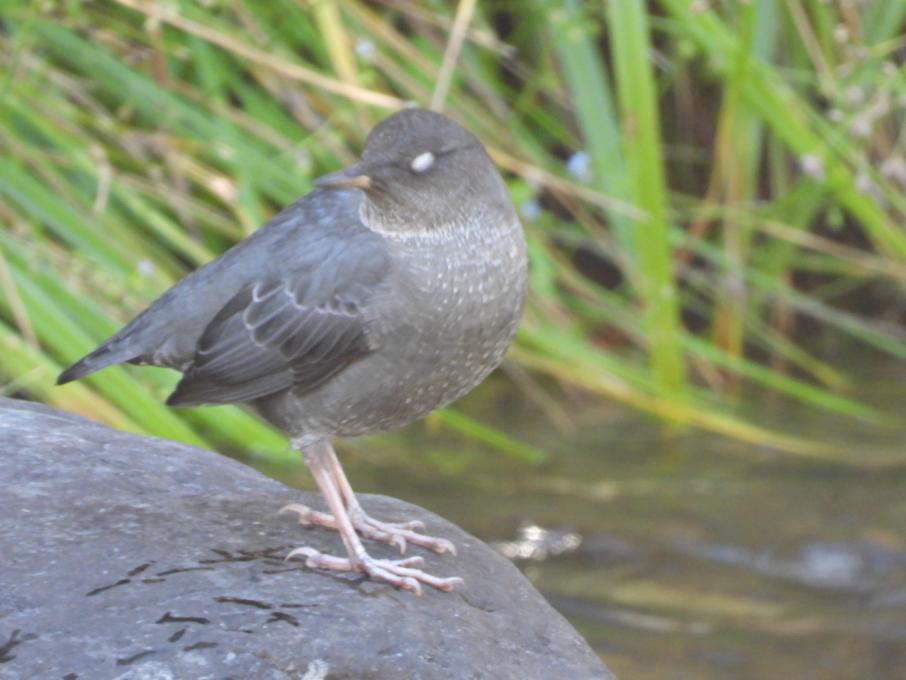
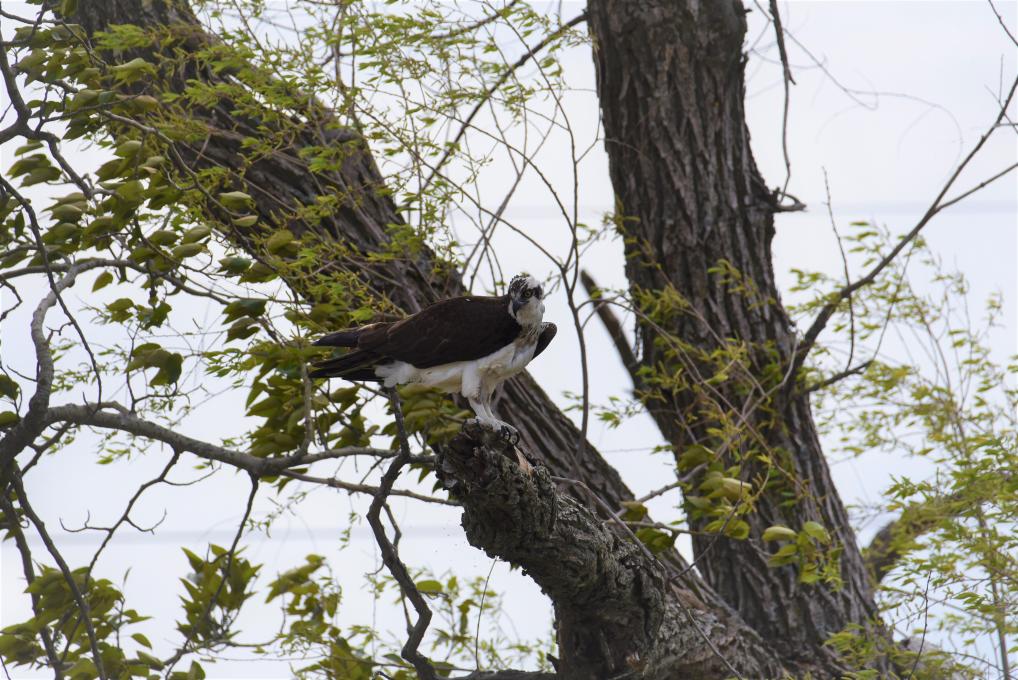

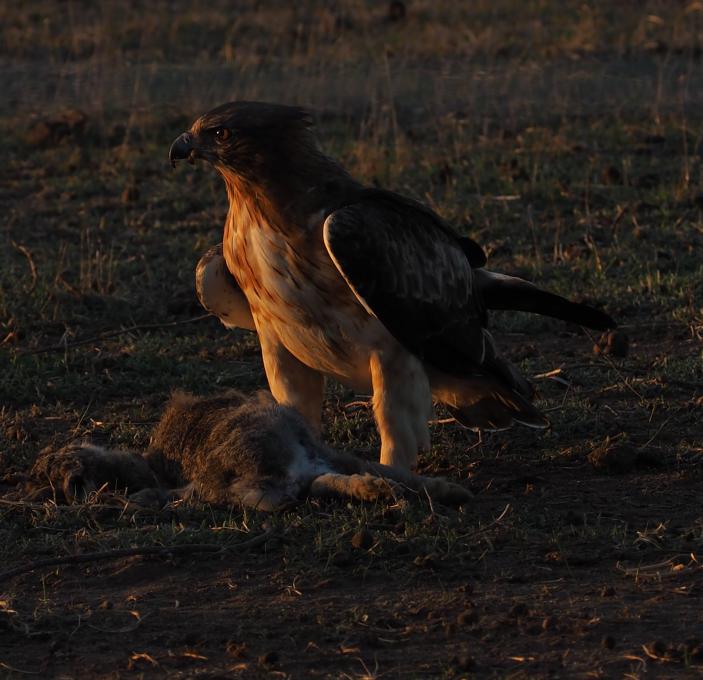
 A Little Eagle (Hieraatus morphnoides) feasting in my back paddock on rabbit. A powerful raptor common to my area. I live inland but only 15 kms from the coastline, both habitats of the Little Eagle. We have rabbits, a Little Eagle favorite, that are in plague proportions. Rabbits are vermin here in Australia destroy habitat of native mammals and eat my trees.... I was lucky to catch this Little Eagle feasting on one he had caught in our back paddock. We live close to a coastal sanctuary and Serendip Sanctuary - (Brolga and Bustard breeding programs)
A Little Eagle (Hieraatus morphnoides) feasting in my back paddock on rabbit. A powerful raptor common to my area. I live inland but only 15 kms from the coastline, both habitats of the Little Eagle. We have rabbits, a Little Eagle favorite, that are in plague proportions. Rabbits are vermin here in Australia destroy habitat of native mammals and eat my trees.... I was lucky to catch this Little Eagle feasting on one he had caught in our back paddock. We live close to a coastal sanctuary and Serendip Sanctuary - (Brolga and Bustard breeding programs) 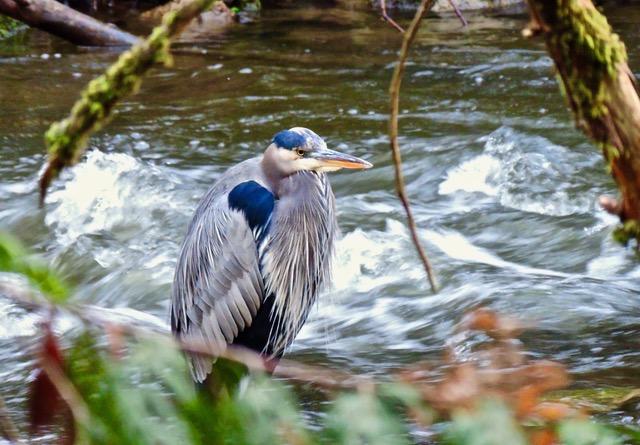
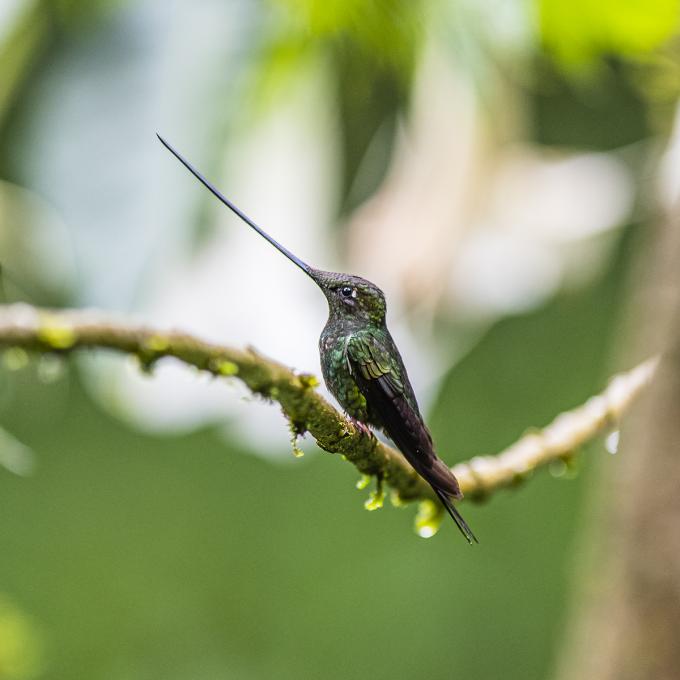 Birders alert me that this Sword Billed hummingbird would feed from the flowers you see in white on the background so I was able to positioned my self to get a good angle to capture the image. I rely on locals for the best sightings most of the time and it usually has provided me great opportunities for some great images.
Birders alert me that this Sword Billed hummingbird would feed from the flowers you see in white on the background so I was able to positioned my self to get a good angle to capture the image. I rely on locals for the best sightings most of the time and it usually has provided me great opportunities for some great images.